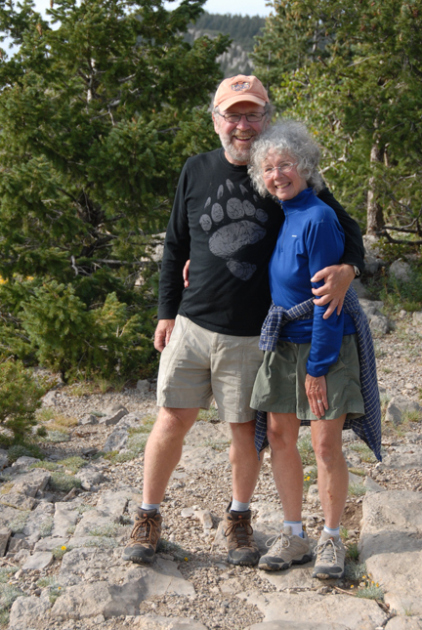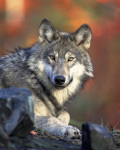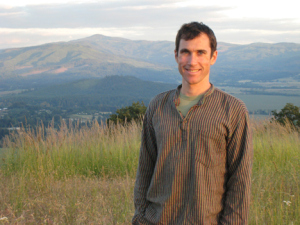By Susan Morgan and John Miles
 On March 22, 2014 Polly Dyer received her honorary Doctorate of Humane Letters from Western Washington University in Bellingham, WA to recognize and celebrate her lifetime of conservation achievements.
On March 22, 2014 Polly Dyer received her honorary Doctorate of Humane Letters from Western Washington University in Bellingham, WA to recognize and celebrate her lifetime of conservation achievements.
Four years ago, after Polly’s 90th birthday party, The North Cascades Conservation Council reported that three hours of speakers stories hadn’t scratched the surface of her remarkable history. “The fruits of Polly’s leadership have blossomed wherever there is wilderness, from the Wilderness Act of 1964 through WA State’s three National Park Wilderness Areas and our various National Forest Wilderness Areas.”[i] Through six decades of championing wilderness, she has nurtured generations of wilderness supporters.
Polly would be the first to say that her life’s work began in 1945 when she met Johnny Dyer walking up a trail on Deer Mountain near Ketchikan AK. Sparks flew. They were engaged in six weeks and married four months later, and for the next 63 years, Johnny Dyer (“Climber, Sierra Club” pronounced the pin on his hat) fostered his wife’s activism and shared her passion for wilderness preservation.[ii]
The Dyers became a great team; no conservation task was too big or too small. Polly persuaded people to join the cause and served as mentor and model; the network she developed was vast and ranged from local activists to politicians, agency personnel and players on the national stage. She gained the respect of all and grew close to many.
Long-time wilderness advocate Karen Fant remembered going with Polly to the Mt. Rainier National Park Centennial. As they made their way to the car after the program, for more than two hours Polly joyously stopped to talk to dear old friends and associates with the Park Service, Forest Service, USFW, agency and conservation representatives. Karen concluded that she needed a leash or they would never get home. (Polly was driving.)[iii]
Though Washington became her home and center of operations, Polly’s scope is national. When she and Johnny lived for briefer times in the San Francisco area or on the East Coast, Polly organized Girls Scouts and together they started Sierra Club chapters and other organizations. Alaska remains one of her most treasured wild places. So moved by it’s natural beauty and scope, she called her life there “the basis for my whole life since.” In 1947, Johnny crafted leather saddlebags for her three-speed Schwinn, and Polly and friend Dixie shipped their bikes to Juneau where they picked them up and barged to Haines. As they biked toward Haines Junction, Canadian Mounties gave them a lift the last few miles into town. The Mounties also generously offered mattresses to the girls in a building that turned out to be the local jail. “There weren’t any hotels in those days,” Polly says. “Jail was easier than tent camping at that point. Then we biked on to Valdez to get more cash and finally to Anchorage.”[iv]
In 1953 the Dyers joined their friend David Brower and a host of conservation organizations in the historic fight against Echo Park Dam in Dinosaur National Monument. Wearing her hat as the conservation chair of the Mountaineers and another hat as a citizen activist, after a two-year skirmish, she and cooperators prevailed. Dinosaur was saved.
During that fight, Polly met Howard Zahniser, Executive Secretary of The Wilderness Society. Zahnie prepared the first draft of proposed wilderness legislation in 1956, and in 1957, Polly began working with Zahnie and other national, state, and local conservation groups. As they crafted language along the way, Polly suggested that Zahnie use the word untrammeled to “describe the character of the public lands that should be eligible for designation.”[v] After sixty-six versions, the act was finally passed in 1964 to establish the National Wilderness Preservation System and of course that little-used word was in it. Twenty years later she was at the center of the successful campaign to pass a Washington State Wilderness Act, which brought nineteen new wilderness areas into the national system.
In 1958 Polly organized a three-day hike along the coastline of the Olympic Peninsula with then U.S. Supreme Court Justice William O. Douglas to increase public awareness about a planned portion of U.S. Highway 101. If constructed, the highway expansion would have destroyed what is now the 73-mile wilderness coastline of the Olympic National Forest. This successful hike now stand out in northwestern and National Park history.
Today, at 94, Polly moves more slowly but continues her work, primarily to “finish” North Cascades National Park. “I want to put my arms around wilderness” she says “and save it all.”[vi]
 In 1967 Susan began her conservation career of twelve years with The Wilderness Society, and she subsequently worked with various conservation outfits (Earth First!, LightHawk, NM Environmental Coalition, Washington Wilderness Coalition, Forest Guardians, and others) that focused on wilderness, wildlands, and public lands conservation. Currently she is a copy editor and is president of The Rewilding Institute.
In 1967 Susan began her conservation career of twelve years with The Wilderness Society, and she subsequently worked with various conservation outfits (Earth First!, LightHawk, NM Environmental Coalition, Washington Wilderness Coalition, Forest Guardians, and others) that focused on wilderness, wildlands, and public lands conservation. Currently she is a copy editor and is president of The Rewilding Institute.
John is retiring after forty-six years as professor of environmental studies at Huxley College, Western Washington University. He is the author of several books on national park and wilderness history, and through these years in the Pacific Northwest has hiked, skied, and taught and studied the history of the North Cascades. He continues to write and plans much wilderness time in retirement.
---------------------------------------------------------------------------------------------------------------------------------------------------------------------------
Read more about the word "untrammeled" and its inclusion in the Wilderness Act in Kevin Proescholdt's essay, "Untrammeled," by clicking here.
---------------------------------------------------------------------------------------------------------------------------------------------------------------------------
[i] Olympic Park Associates, “Polly Dyer Chosen as Wilderness Hero,” Vol. 12, No. 1, Spring 2004
[ii] HistoryLink.org, The Seattle Times, August 7, 1974
[iii] Personal communication with Susan Morgan
[iv] Personal communication with Susan Morgan
[v] [v] Olympic Park Associates, “Polly Dyer Chosen as Wilderness Hero,” Vol 12, No. 1, Spring 2004, and personal communication with Susan Morgan
[vi] Personal communication with Susan Morgan
 On March 22, 2014 Polly Dyer received her honorary Doctorate of Humane Letters from Western Washington University in Bellingham, WA to recognize and celebrate her lifetime of conservation achievements.
On March 22, 2014 Polly Dyer received her honorary Doctorate of Humane Letters from Western Washington University in Bellingham, WA to recognize and celebrate her lifetime of conservation achievements.Four years ago, after Polly’s 90th birthday party, The North Cascades Conservation Council reported that three hours of speakers stories hadn’t scratched the surface of her remarkable history. “The fruits of Polly’s leadership have blossomed wherever there is wilderness, from the Wilderness Act of 1964 through WA State’s three National Park Wilderness Areas and our various National Forest Wilderness Areas.”[i] Through six decades of championing wilderness, she has nurtured generations of wilderness supporters.
Polly would be the first to say that her life’s work began in 1945 when she met Johnny Dyer walking up a trail on Deer Mountain near Ketchikan AK. Sparks flew. They were engaged in six weeks and married four months later, and for the next 63 years, Johnny Dyer (“Climber, Sierra Club” pronounced the pin on his hat) fostered his wife’s activism and shared her passion for wilderness preservation.[ii]
The Dyers became a great team; no conservation task was too big or too small. Polly persuaded people to join the cause and served as mentor and model; the network she developed was vast and ranged from local activists to politicians, agency personnel and players on the national stage. She gained the respect of all and grew close to many.
Long-time wilderness advocate Karen Fant remembered going with Polly to the Mt. Rainier National Park Centennial. As they made their way to the car after the program, for more than two hours Polly joyously stopped to talk to dear old friends and associates with the Park Service, Forest Service, USFW, agency and conservation representatives. Karen concluded that she needed a leash or they would never get home. (Polly was driving.)[iii]
Though Washington became her home and center of operations, Polly’s scope is national. When she and Johnny lived for briefer times in the San Francisco area or on the East Coast, Polly organized Girls Scouts and together they started Sierra Club chapters and other organizations. Alaska remains one of her most treasured wild places. So moved by it’s natural beauty and scope, she called her life there “the basis for my whole life since.” In 1947, Johnny crafted leather saddlebags for her three-speed Schwinn, and Polly and friend Dixie shipped their bikes to Juneau where they picked them up and barged to Haines. As they biked toward Haines Junction, Canadian Mounties gave them a lift the last few miles into town. The Mounties also generously offered mattresses to the girls in a building that turned out to be the local jail. “There weren’t any hotels in those days,” Polly says. “Jail was easier than tent camping at that point. Then we biked on to Valdez to get more cash and finally to Anchorage.”[iv]
In 1953 the Dyers joined their friend David Brower and a host of conservation organizations in the historic fight against Echo Park Dam in Dinosaur National Monument. Wearing her hat as the conservation chair of the Mountaineers and another hat as a citizen activist, after a two-year skirmish, she and cooperators prevailed. Dinosaur was saved.
During that fight, Polly met Howard Zahniser, Executive Secretary of The Wilderness Society. Zahnie prepared the first draft of proposed wilderness legislation in 1956, and in 1957, Polly began working with Zahnie and other national, state, and local conservation groups. As they crafted language along the way, Polly suggested that Zahnie use the word untrammeled to “describe the character of the public lands that should be eligible for designation.”[v] After sixty-six versions, the act was finally passed in 1964 to establish the National Wilderness Preservation System and of course that little-used word was in it. Twenty years later she was at the center of the successful campaign to pass a Washington State Wilderness Act, which brought nineteen new wilderness areas into the national system.
In 1958 Polly organized a three-day hike along the coastline of the Olympic Peninsula with then U.S. Supreme Court Justice William O. Douglas to increase public awareness about a planned portion of U.S. Highway 101. If constructed, the highway expansion would have destroyed what is now the 73-mile wilderness coastline of the Olympic National Forest. This successful hike now stand out in northwestern and National Park history.
Today, at 94, Polly moves more slowly but continues her work, primarily to “finish” North Cascades National Park. “I want to put my arms around wilderness” she says “and save it all.”[vi]
 In 1967 Susan began her conservation career of twelve years with The Wilderness Society, and she subsequently worked with various conservation outfits (Earth First!, LightHawk, NM Environmental Coalition, Washington Wilderness Coalition, Forest Guardians, and others) that focused on wilderness, wildlands, and public lands conservation. Currently she is a copy editor and is president of The Rewilding Institute.
In 1967 Susan began her conservation career of twelve years with The Wilderness Society, and she subsequently worked with various conservation outfits (Earth First!, LightHawk, NM Environmental Coalition, Washington Wilderness Coalition, Forest Guardians, and others) that focused on wilderness, wildlands, and public lands conservation. Currently she is a copy editor and is president of The Rewilding Institute.John is retiring after forty-six years as professor of environmental studies at Huxley College, Western Washington University. He is the author of several books on national park and wilderness history, and through these years in the Pacific Northwest has hiked, skied, and taught and studied the history of the North Cascades. He continues to write and plans much wilderness time in retirement.
---------------------------------------------------------------------------------------------------------------------------------------------------------------------------
Read more about the word "untrammeled" and its inclusion in the Wilderness Act in Kevin Proescholdt's essay, "Untrammeled," by clicking here.
---------------------------------------------------------------------------------------------------------------------------------------------------------------------------
[i] Olympic Park Associates, “Polly Dyer Chosen as Wilderness Hero,” Vol. 12, No. 1, Spring 2004
[ii] HistoryLink.org, The Seattle Times, August 7, 1974
[iii] Personal communication with Susan Morgan
[iv] Personal communication with Susan Morgan
[v] [v] Olympic Park Associates, “Polly Dyer Chosen as Wilderness Hero,” Vol 12, No. 1, Spring 2004, and personal communication with Susan Morgan
[vi] Personal communication with Susan Morgan
11681 Hits







